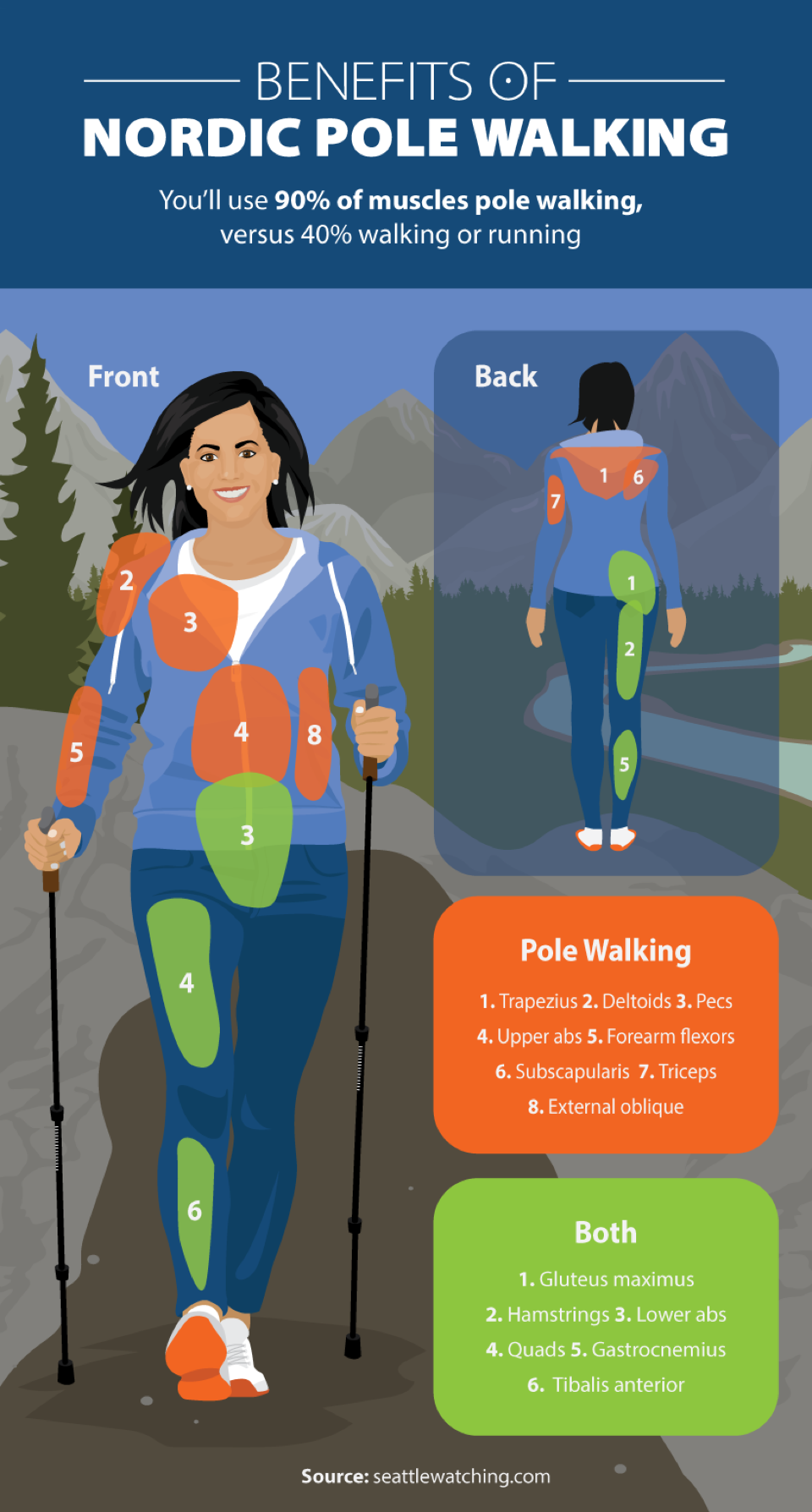Nordic pole walking is a workout that, when done properly, exercises 90 percent of your muscles. It’s low impact by nature, it’s fun to do, and it keeps you outdoors, making it an ideal form of exercise for anyone from out-of-season skiers to those recovering from injuries. Get started with this guide on gear, proper technique, and pole-walking location and workout suggestions.

So, what is Nordic pole walking? This form of exercise originated in Finland, and it has long been popular throughout Scandinavia and the U.K. Often used for cross-country ski training in the off-season, Nordic pole walking is now popular with people all over the world as a simple-yet-effective form of exercise.
Nordic pole walking uses both the lower and upper body muscles. The lower body gets the benefits of traditional walking or speed walking, and the poles work the upper body. Because of this combination, Nordic pole walkers benefit from fitness-building stimulation that’s not present in normal walking, as the chest, triceps, biceps, shoulders, and abdominals get a workout along with the leg muscles. The core is also engaged as the walker thrusts forward with the poles.
Nordic pole walking improves cardio-respiratory fitness, especially in older adults for whom resistance training or high-impact sports are not ideal. It can also improve balance and reduce neck pain. It’s a total body workout that’s fun and that encourages a sense of adventure since it can be done everywhere from parks and roads to hiking trails.

Traditionally, pole walkers used fixed-length ski poles during the off-season to pole walk, staying in shape for Nordic skiing. While fixed-length poles can still be used, there is greater benefit from specially designed Nordic walking poles. Nordic walking poles come in two forms: one-piece, non-adjustable shaft versions available in varying lengths; and telescoping, adjustable-length, twist-locking versions. One-piece poles are generally stronger and lighter, but they must be matched to the user. Telescoping poles are “one-size fits all” and are more transportable.
Choosing the best type of pole is highly personal; different models come with different types of hand grips and wrist straps. Most Nordic poles come with a rubber stopper over the tip so you can use them on pavement or sidewalks (walkers take the rubber off for better traction on dirt trails). On pavement, you’ll want the rubber tip, but on grass, dirt, or uneven terrain, you’ll have better traction with the metal tip.
This Retro WON first appeared September 22, 2017.
The Women's Outdoor News, aka The WON, features news, reviews and stories about women who are shooting, hunting, fishing and actively engaging in outdoor adventure. This publication is for women, by women. View all posts by The WON